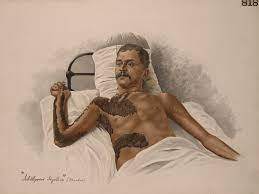The Pectoralis major is a powerful and large, fan-shaped chest muscle. It has two starting sections: Sternum (a breastbone) and the clavicle (collarbone). Both of these sections make the “pectoralis major tendon”. It is wrapped around the humerus (upper arm bone). The pectoralis muscle helps move arms backwards or forward, rotating or extending them.
A pectoral tear or an injury to this tendon or muscle is rare and happens if you are involved in sports like wrestling or activities that require huge force, like weightlifting or bench press exercises.
The common chest injury due to a thoracic trauma is hemothorax or pneumothorax.
How does a pectoralis major torn occur?
Pectoral tears occur when you rotate or extend your arm externally during the tightening or contracting of muscle with an intolerable force. The injury to the chest muscle happens while weightlifting, bench-pressing heavy weights or extending your arm while bench-pressing, which can cause muscle or tendon tears.
Activities causing pectoral muscle
Symptoms of pectoralis tears
Injury or tendon tears of major pectoral muscles may cause
Tearing sensation or sudden pain in the chest
Pain in the upper arm.
Weakness feeling while moving your arms.
You may experience difficulty in breathing.
Tenderness in ribs or chest muscles.
Bruising
Swelling
Chest pain worsens while laughing, sneezing or coughing.
Blood coughing.
Coughing with green, yellow or blood-stained phlegm.
Persistent chest pain after eight weeks
Heart palpitations.
Do you experience pain while having pectoral tears?
Pectoralis torn is generally very painful. It can cause bruises on the chest, arm or shoulder if it is severe. You may also experience a visible gap between the muscle tissue and the pectoral tear. You will experience pain and weakness while lifting or using the arm.
The first sensation during pectoral major torn is extreme pain in the chest or related areas.
Is it serious about having torn pectoral muscle?
Yes! Pectoral muscle rupture can cause severe pain, upper arm pain, weakness, a dimpling or bruising. You can also experience a pocket formation over the armpit. The initial treatment may include applying ice, shoulder, chest and arm immobilization.
Is it possible to recover from a pectoral tear by itself?
In many conditions, pectoral muscle damage never heals by itself. Your surgeons may require surgery to attach the muscles again to help you recover. The surgery involves stitching the muscle back to your upper arm.
Who has a high risk of having pec tears?
Pec tears are common in young, physically active men of 20 to 40 years, especially athletes. Torn pec muscles cause serious disability.
How is torn pectoralis major diagnosed?
Suppose you suspect a sudden extreme pain in your chest muscles. The first step in diagnosing a pectoralis major tear is a physical examination. Your healthcare provider will check the overall muscle mass and chest shape during a physical exam.
They will ask you to have imaging tests like an X-ray, Chest or shoulder MRI or ultrasound to confirm the diagnosis and severity of the injury.
Treatment options for pec tears
The treatment options depend on the nature and severity of the muscle tears.
Partial/minor tear: If you have a minor pectoral muscle tear, especially where tendon and muscle meet, you may not require surgery. Surgery is not a good option if the tears are within the muscle or the affected person is old. Your healthcare provider may suggest rest and a sling. They also recommend applying ice and compression and taking over-the-counter painkillers.
Complete/full tear. If a complete tendon tear occurs, you will require surgery to get it fixed and restore muscular strength. You may experience surgery after three months of the injury and prevent further tearing. Early repair options may reduce the lower scar tissue buildup and keep the muscle from further shrinking.
Surgeons may use multiple techniques to attach the tendon to the bone again. For example, the healthcare provider may place sutures in the damaged tendon to make it secure to the bone of the upper arm and make a hole or put anchors in it. If the tendon tear is severe, you may require a transplant for complete recovery.
Recovery time for a pectoral muscle tear.
If you are experiencing lower-grade tears, it may take four to six weeks for complete recovery. If the pectoral tears are high-grade, it may take three to four months. The healthcare providers cannot determine the healing time by the injury grade. It also varies according to the condition of the patient.
Avoid weight lifting over the head if you experience tendon or muscle damage. You must discuss this with your healthcare providers and physical therapist before resuming the activities like weightlifting or sports. He may add passive or active exercises. You may need some weeks or even months for complete healing, and complete recovery may require six to eight months.
Does every type of pectoral tear require surgery?
You may require surgery to get pectoralis major injury repair, except the tendon tears are partial or minor. If the pectoral muscle rupture from the centre, or if it happens in elderly patients. It is quite difficult to return completely to sports without surgery. So, surgery is a good option for athletes who have pectoralis tears.
What is the treatment of minor pectoral tears?
In minor pec tears, the surgeon may recommend a conservative approach to treatment. They recommend rest, applying ice, and taking anti-inflammatory medication in the first two to three hours of the surgery. You can use an arm sling to improve comfort; immobilization is unimportant.
Conclusion
A Pectoralis tendon tear is an uncommon injury that can cause sudden eccentric force. The injury generally occurs in men involved in activities that require huge force. It is a rare but acute injury; if its severity is high, you may require surgery to reconnect the muscle with the bone. You must check either your insurance provider covers this surgery.


